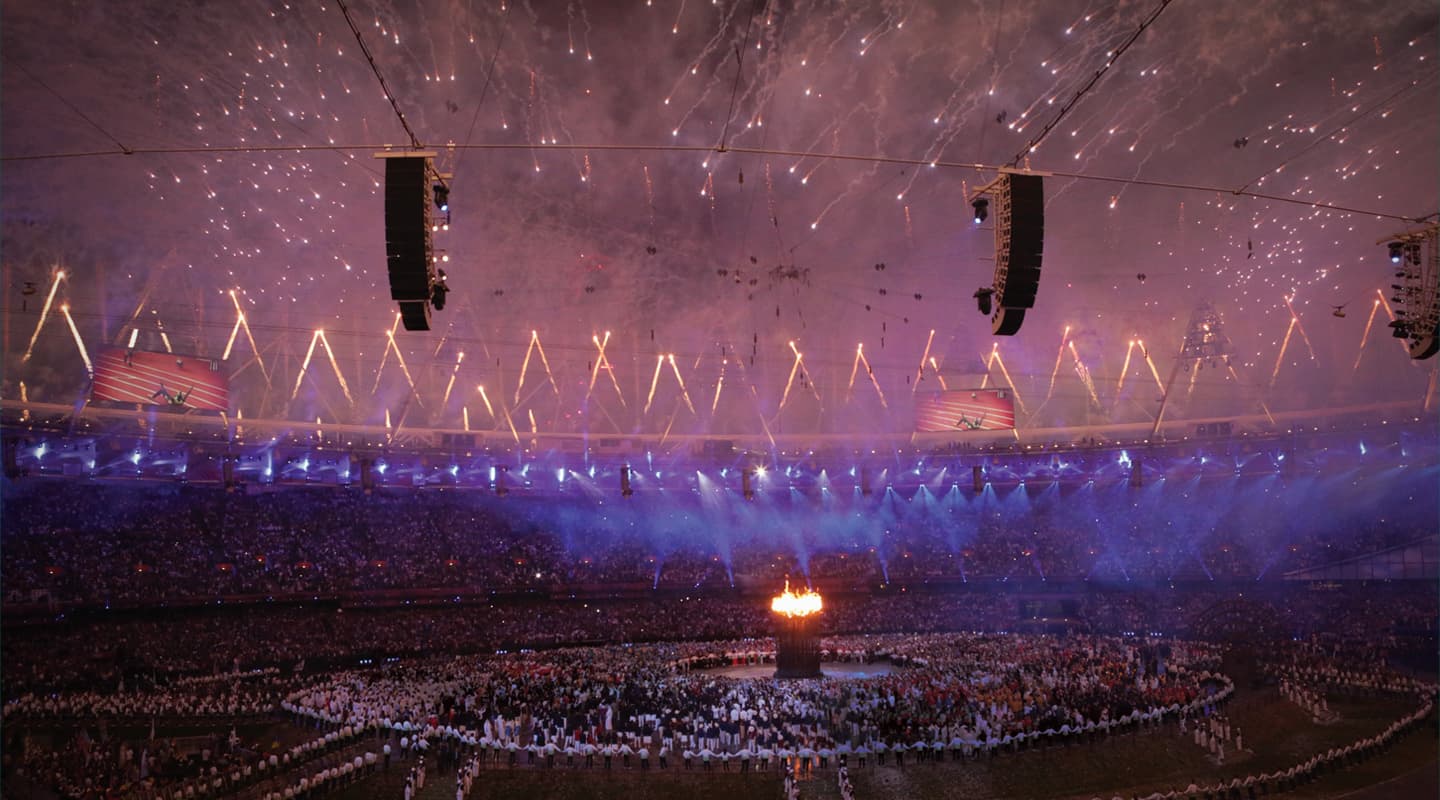
Olympic Effort
The London Olympics wasn’t the most successful for our Aussie athletes but a contingent of Aussie audio specialists put in a solid gold effort to get the ceremonies over the finish line.
Photos: Scott Willsallen
There’s a relatively small pool of talent from which to draw a team that can successfully pull off events like the London 2012 Olympic Ceremonies. And most of them roll from job to job. Australian Scott Willsallen is one of those select few with enough big event experience to even be considered for the job. But it doesn’t necessarily make it any easier to secure that position.
Scott Willsallen was full-time in London for three and half months, but he’s been on the ball since a couple of years ago in Doha. At the time, Scott was Audio Director for the 2010 Commonwealth Games, and the common practise at these major games is for the closing ceremony to double as the handover to the host of the next event. As it happened, Catherine Ugwu and Piers Shepperd, respectively London 2012 Executive Producer of Production and Technical Director, were also on the production team for the 2014 Glasgow Commonwealth Games. It’s truly a small world at the top. For Scott, “It was a good way to start being able to talk about London without sounding like a sleazy sales guy. I had known both of them from a previous project. Piers had worked on Athens and Doha, Catherine on Doha and Vancouver, so I knew both of them reasonably well and they were quite pleased with how the handover sounded, which made it easy to talk about.”
Talking about it, and actually securing the gig were two very different things, and by the time Scott met with them again in London at the end of 2010, the list had grown to half a dozen candidates — five of them from the UK, and him. They were keen to whittle it down to a team of two, and in the end decided on an arranged marriage between Scott and theatre guru Bobby Aitken. But with such a high priority gig, it’s the unknowns that are killer, and Bobby had already started putting the feelers out amongst the people he was familiar with. But when a mutual friend invited them both to an awards night in London the two began to talk, and a few months later a two-week trial of their working relationship blossomed into 18 months of work on the project. The job split was Bobby was the sound and audio designer, while Scott took care of the audio system design. “He dealt with the art and I dealt with the systems side,” said Scott. “He was very familiar with all the ceremony directors and I brought the experience of having done lots of ceremonies in the past. Whereas he hadn’t ever done one.”
THE NON-DELIVERABLES
By the time Scott and Bobby were full-time on the production, the shows for both the Olympic and Paralympic Opening and Closing ceremonies were pretty well developed. While they had regular fortnightly meetings over the year prior, it wasn’t really a side-by-side effort, which meant there were a few kinks in the plan that had to be ironed out from a technical standpoint.
There were some interesting differences between filmmaker Danny Boyle’s vision for the opening ceremony — whose working world is contained within the viewing angles of a cinema or TV screen — and the comparatively ‘micro’ world of thousands of people watching the live spectacle within the stadium.
Scott: “There was a bit between the Green and Pleasant Lands segment and the transition into Industrial Revolution where there was a troupe of about five different musical performance groups working their way around the road wrapping around the stage and centre — we called it the M25 [the London ring road].
“The original idea was that each of those groups would have their own sound source. So for instance, one was a carousel, and they wanted it to sound like a carousel. If you’re thinking about it from a film point of view, when you’re switching between cameras, the sound that belongs with that camera shot opens up with the vision from that camera and goes away again when the shot switches. We could do that for the audience on the television, but it doesn’t really work for the audience in the stadium. You can’t guide their eyes and equally guide their ears.
“It took quite a few crazy conversations just trying to get everyone to understand the audience experience of having a carousel travel past you at walking speed for three minutes. Whereas in Danny’s mind the camera would snap to it for five seconds, then switch away again. The learning curve for Danny — having no experience in the live stadium environment — was to grapple with the challenges of speed of sound and not being able to direct the audiences eye as you can with a camera.”

THE TENDER SPEC
The ceremonies were conducted in the round, in London’s new-build Olympic Stadium. But as far as Scott was concerned the system design was just like any other — it’s simply all about coverage. “The great thing about loudspeaker system design is that it has nothing at all to do with the staging of the show, it’s based around the geometry of the building,” said Scott. “I did the designs in June 2011, and at that point the shows weren’t fully developed, but it didn’t really matter because the seating areas were known, the stadium was already built and the drawings were accurate. So it was really easy to build a system design that covered the venue well, and it just meant either muting a little bit here or adding some fill boxes here and there.
“The only real interaction is the gear that gets stacked on the floor. It has to be in an area that is far enough off the field that there is no performance passing between the loudspeakers and the audience, but also not so close that you can’t get the appropriate coverage out of it.”
When Scott and Bobby put out an invite for tenders to supply the event, they wanted the vendors to respond to an actual equipment list, rather than asking companies to respond to an indicative design. As well as the L-Acoustics V-DOSC and Kudo combo, the other options were d&b J in the air and on the floor, Meyer Milo in the air and Mica on the ground, a Martin Audio spec, and a Clair Brothers design based on the i5 and i3 products. Applicants were shortlisted to two by a weighted scoring system individually assessed by everyone involved, then awarded to the favoured one, with final negotiations on price at the very end. The contract was won by the UK-based Delta Sound, who had formed a joint venture with Norwest Productions here in Australia, as well as Autograph and Britannia Row in the UK.
Scott: “Britannia Row didn’t really supply a lot of gear because they were pretty well hammered with all the other events going on. Autograph provided the consoles and a little bit of the smarts. Norwest provided about 20% of the PA and all of the clever stuff — the replay system, the Optocore network, all of the analogue distribution and electronics, half the wireless kit, and all the customised kit.
And Scott wasn’t the only talented Aussie that made the trip. “Trevor Beck was engaged by London 2012 direct as the replay operator,” said Scott. “From Norwest, Justin Arthur was the senior systems engineer, and Matt Whitehead was the senior field systems man. Justin was looking after the main Optocore control and patching, and Matt was looking after the field equipment side. If ever there was a problem with network, between Matt and Justin they’d solve the issue. Steve Caldwell, also from Norwest, is the RF guru, and Rachel, Steve’s wife, was the in-ear equipment manager. Also, Andrew Marsh was engaged by Norwest as the project manager to make it all happen — organise, coordinate with Delta Sound and all the freight logistics to get everything over from Australia.
ONE SHOW, MANY CONSOLES
During the ceremonies, neither Bobby or Scott mixed. The team of mixers at Front of House included Richard Sharratt (Peter Gabriel Live), who mixed the opening for both the Olympics and the Paralympics; Gary Bradshaw (George Michael Live) mixed the closing of the Olympics; and Simon Honeywell (Glastonbury) mixed the closing of the Paralympics. Steve Watson (Glastonbury) handed monitors for all four ceremonies, and Andy Rose supervised the broadcast audio — one operator’s role was entirely taken up mixing the dozens of channels of crowd atmosphere and camera mics — with Bobby and Scott providing general oversight.
There were six Digico SD7 digital consoles all up, one each on the optical network, and mirrored consoles on the analogue network for FOH, monitors, and broadcast. The engineers were seeing 170 inputs at the console from three full MADI streams — two from the optical network, and the other from the replay system.
I’ve never put that much power into the air with a sound system before
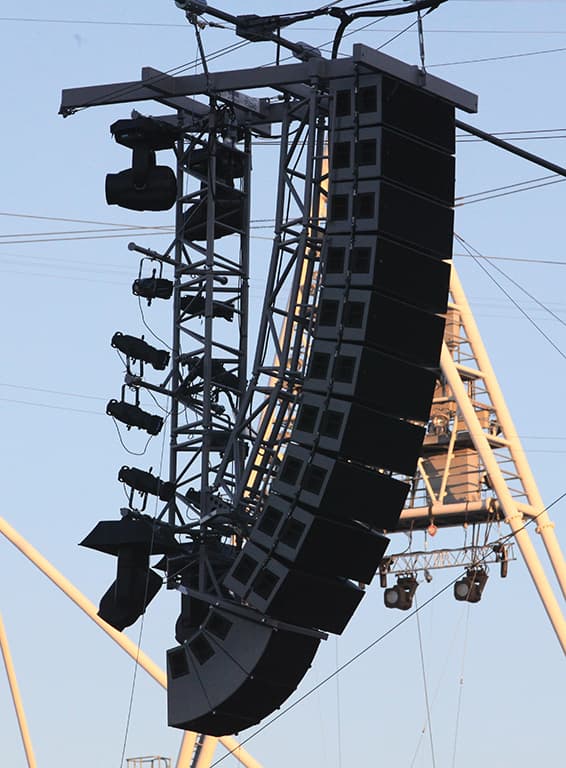

SEAMLESSLY MADE REDUNDANT
While the operators only see 170 channels of audio, altogether there were about 800 channels flying around the stadium-wide, 24-node Optocore network. On top of the two MADI streams, there were the returns from both FOH and monitor consoles, including paging ins and outs, 70-odd channels of crowd mics, and comms lines.
There were also about 30 Dolby Lake processors scattered throughout the system. And in addition to the Optocore fibre network, there was also an entire, completely independent, analogue network running in parallel as a backup signal feed in case anything went down.
“The consoles were mirrored,” said Scott. “So at any point, if we switched from analogue to digital, the operator wouldn’t necessarily need to be aware of it. It sounded the same, the levels were matched, the EQs were constant across the two. The switch would happen automatically if a network node broke or the Dolby Lake processor lost sync.
“There was also a pair of Pyramix 56-track replay systems with ISIS controllers, tons of Shure Axient wireless microphones, and various inputs for lecterns and live components. Timecode distribution was taken care of by 24 timecode readers scattered around the building and a similar number of data feeds for lighting consoles, projection systems, and so the pyrotechnics fire at the right time. That was all dual redundant as well.
“There were levels of redundancy throughout and switchover mechanisms that don’t involve human intervention, but can if need be. It’s a very specific set of requirements that most projects don’t need, but that’s why it’s rehearsed and thought about for two years prior. You only get one shot to put that three hours to air, so making sure nothing can fail is the priority.”

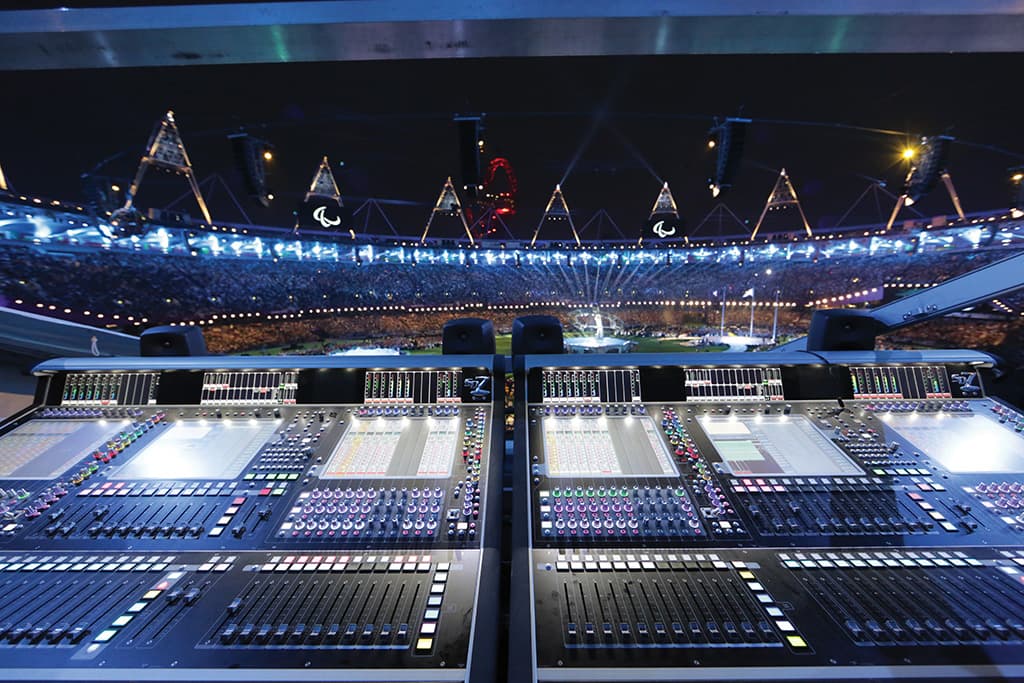
COUNT IN TIME
To ensure the big pyro explosions happened during guitar solos and not over the Queen’s address, the entire event was synced to timecode. There was a lot resting on those timecode cues — automation, lighting, video, pyro — and many are programmed to music. Which means that everything, including the live performances was to a click.
Scott: “We had a recording on the playback machines of everything you heard go to air as a fallback in case of catastrophic failure. The Arctic Monkeys played live at the opening ceremony, but it was to a click. Once they recorded the track, we gave them back a copy of that recording with a click inserted against it that followed their natural rhythm, rather than being a fixed click. That meant there was an audio click they could follow that was based on their original performance, so it wasn’t intrusive.”
A surprising number of performers played live at the event. Though sometimes it didn’t all go according to plan. Sir Paul McCartney’s TV broadcast went a bit awry because of a simple mistake — counting in one bar instead of two. “In the house we were taking him live for the whole piece,” said Scott. “we just had the clicks in there for synchronising fireworks and the like. But in broadcast, they decided to take the pre-recorded first verse then they would go live, which worked fine in practise.
“The problem was that there were two bars of click before the start, not one. So when Hey Jude started, in the stadium we heard McCartney performing live, and at home you heard that early intro come through via the ambient mics. But then a bar later you could hear the direct clean sound come in from the replay over the top of that ambient sound. Because we weren’t using the replay in the house, it sounded fine. But in broadcast they were hearing the early atmos and the late McCartney till they switched to the live feed. They were tearing their hair out! We did manage to tidy that up prior to it going to air on the US west coast.”
While you can’t account for every human error, a lot of Scott’s job was spent ironing out any points of failure within the system, solving them before they ever saw the light of day. Like Brian May’s wireless rig. “Brian May’s guitar system is quite complex,” said Scott. “He’s a real single point of failure in that if he breaks a string, he needs to swap guitars. From our point of view, all we wanted was the left-centre-right microphones on the guitar cabinets, but they were in a great big stadium and we were in a much better place to provide them with robust wireless audio between the guitar and the stage where their switch input was. So that needs four or eight channels of audio on its own. We still had to deliver those channels to the console, because it was a macro on the console that was doing the routing. The simple act of Brain May walking from the north to the centre stage is not a big deal. But the reality is that it’s 120m in a very tricky RF environment. To make that work, and be robust, we ended up using a hell of a lot of resources. But we make it as simple as we can from a user point of view so it’s only one button on the FOH board, and one for the guitar tech.”

THE QUEEN’S SPEECH
While during the Closing Ceremony, there was live music act after live music act — the Spice Girls zooming around on top of cabs, Annie Lennox doing a Winslet on Captain Jack’s boat etc — the most difficult moment was a simple, small voice.
Scott: “Music is a lot easier than speech, especially in a stadium. With speech you have the disadvantage of the gaps between different syllables. The reverberant energy of one syllable can mask the next syllable. Whereas with music there’s a solid underscore that provides good masking for most of the reverberant energy.
“It’s tricky, but the direct-to-reverberant ratio is what it’s all about of course. How do we make that good? A really good start is to fill the place with people, which puts you in much better shape than when it’s empty. If you test gain before feedback, and tune the microphone with the stadium empty, you’re always going to be in better shape when the stadium is full.
“The microphones on the field, which are usually lecterns, were fine. Each of the flown line arrays were 10 elements high — providing a very good vertical pattern. The ground-stacked arrays were only four high but by stacking them on the ground it gave an effective line length of eight high, which again gave pretty good vertical pattern control. So we didn’t really have a gain-before-feedback problem with the lectern. It was more about getting the signal to broadcast as clean as possible, and our audience provided exactly what we needed there.
“There was one microphone that is actually in the bowl, the one the Queen used to declare The Games open. In this case that microphone was about 30 metres from both the ground stack and the arrays, and under a balcony. It was a really crappy acoustic situation to be in. Luckily she only needed to say, “I now declare The Games open!” And everyone had the manners to shut up when she did it. So for us it was a case of identifying which parts of the PA were going to cause us problems and either mute or attenuate them to get away with that 10 seconds of speech before opening them up again.”
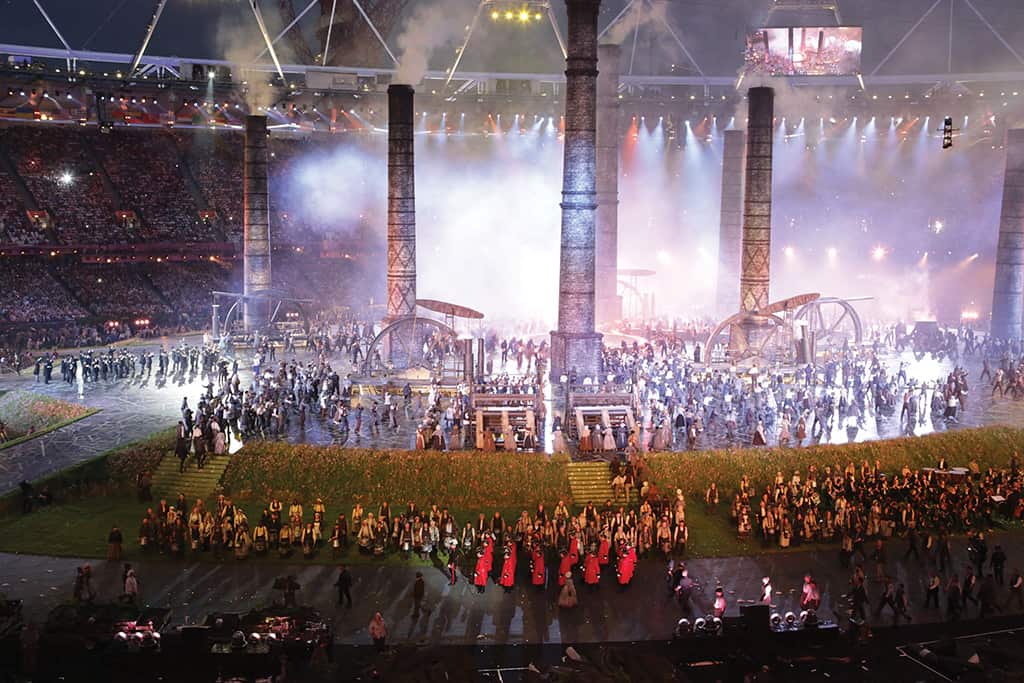
FAVOURITE MOMENT
All up, the ceremonies were a raging success. Creative, engaging, and sublime. For Scott, there was one moment in particular that left him breathless.
Scott: “My favourite moment, during the opening ceremony was the Pandemonium segment (the part where all the chimneys started lifting out of the stage floor, the grass was getting ripped up, and the Industrial Revolution was taking over). There was seven or eight minutes of very big, techno, drum-based music. I’d heard it countless times in the stadium, but I had a friend of mine come see the show. He’s a technical director for these kinds of ceremonies, and has worked in a sound company for many years — and he was speechless. He couldn’t describe the amount of energy that was in the air.
“I’ve never put that much power into the air with a sound system before. But the content didn’t have a lot of high frequency in it at all. It was all lows and impact, and at high level it sounded just amazing. It was probably the biggest impact I’ve been able to deliver to an audience with a sound system.”




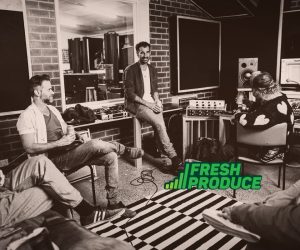

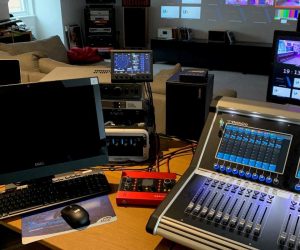
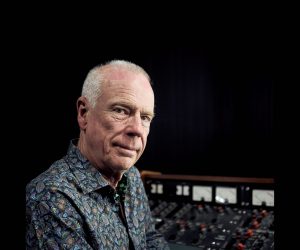
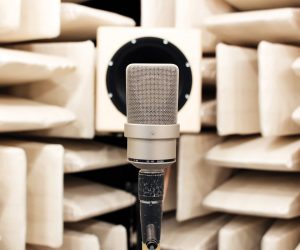
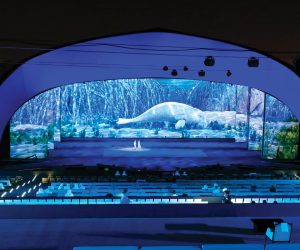



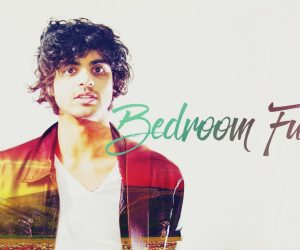


RESPONSES